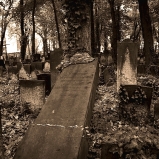- “Raven King”, 2019
Years ago I began creating abstract line drawings, or ‘sigils’, inspired by nature. In these works I summarize nature science, folklore and personal experiences connected to the plants and animals that surround me. Some of these works are already 10 years old. The best known is perhaps the official Teufelskunst logo, which is inspired by the wormwood herb. Another is my sigil for the ‘black mandrake’ and the metamorphous art titled “Regina Amandrakina”, which were both published in “Pillars Periodical, The Ebon Kteis” (Anathema Publishing, Canada, 2014).
A first print edition of these works was introduced at the London “magical Art/E” event, which took place in 2014 at the old Hackney tower. Later (still self-produced) print editions sold out quickly. In follow, I created smaller ink drawings and miniature editions with these sigils. An important aspect of these drawings is the treatment of the paper, which is infused with tinctures and corresponding extracts of natural materials. In November 2017, these ink drawings premiered as part of the “Bad Intentions” group exhibition at Gallery CIRCLE1, Berlin.
“Raven King” Sigil
This is my second work in this line representing an ‘animal’ spirit. It combines mythology and spiritual lore connected to the Corvidae family.
Ravens and crows both feature extensively in the mythology and folklore of basically all continents and nations. I cannot remember when exactly my own journey with these animals started. But they continue to present me with the most auspicious magic and moments, whenever I open up and notice their ever-presence. Hence, when a friend inquired for a crow skull tattoo, I already felt a deep connection to the animal’s collective spirit. But then began a reading and study journey, for which I received some wonderful recommendations. The sigil art presented here is the quintessence of my autumnal journey with the crows, ravens, magpies, jackdaws and grosbeaks around me and their universal lore.
In November 2019 I created the first ink drawings on infused paper. The sigils are signed and numbered on the back. They come in a black cardboard box, which is also signed and numbered. Along with the artwork you also receive a 30 ml bag of evocation incense, created specifically for the King of all Corvid Folk, as well as one piece of cherry resin and one auspiciously branched “Pin of Slumber” from the blackthorn.
Artwork size: ca. 12,5 x 12,5 cm
Edition specifics: limited to 2 x 7












































